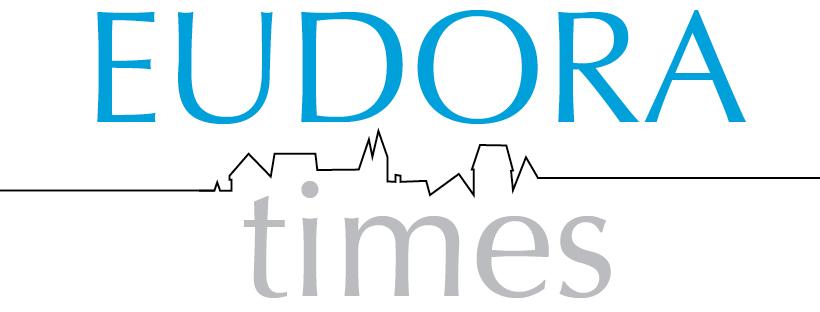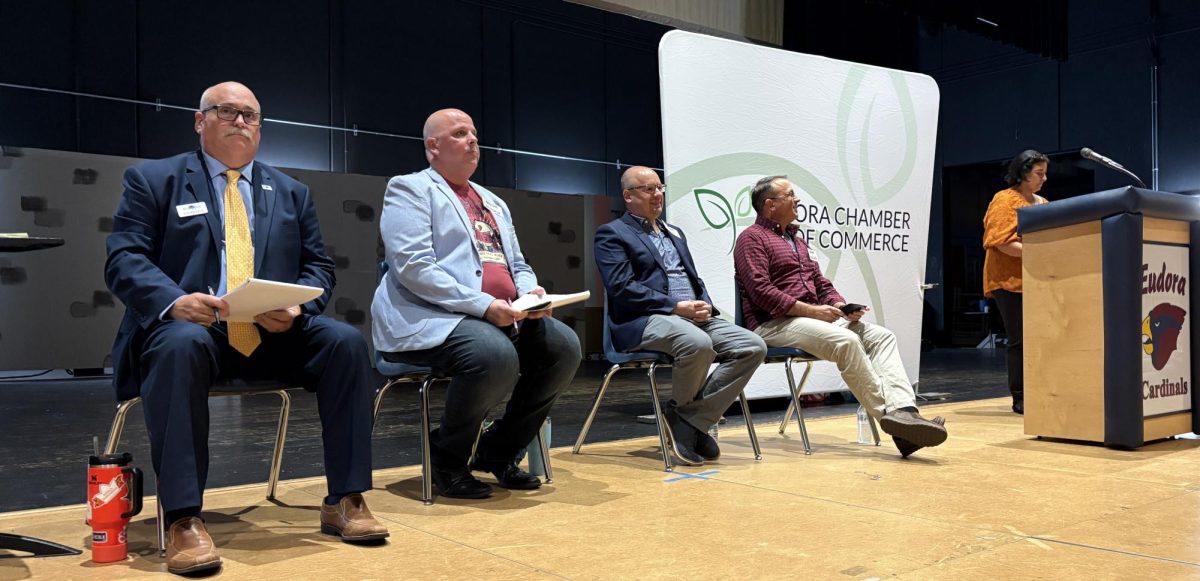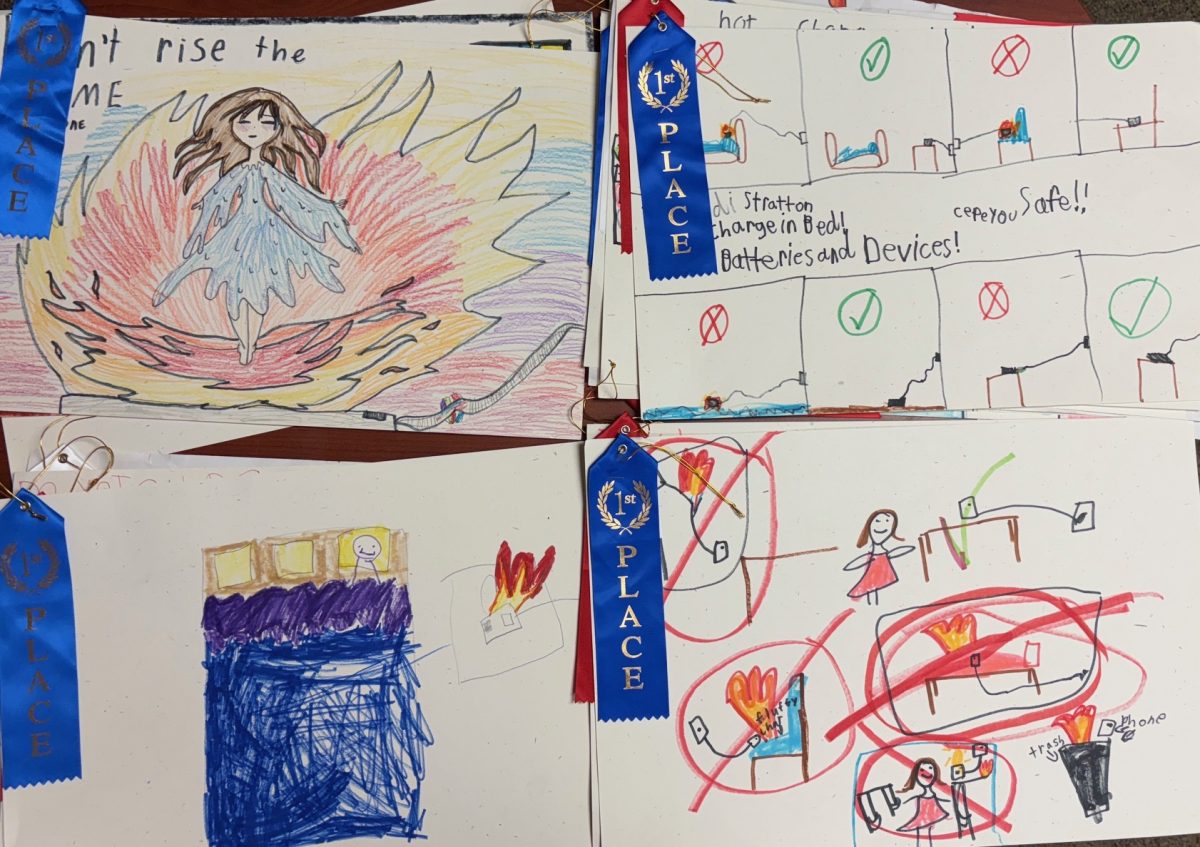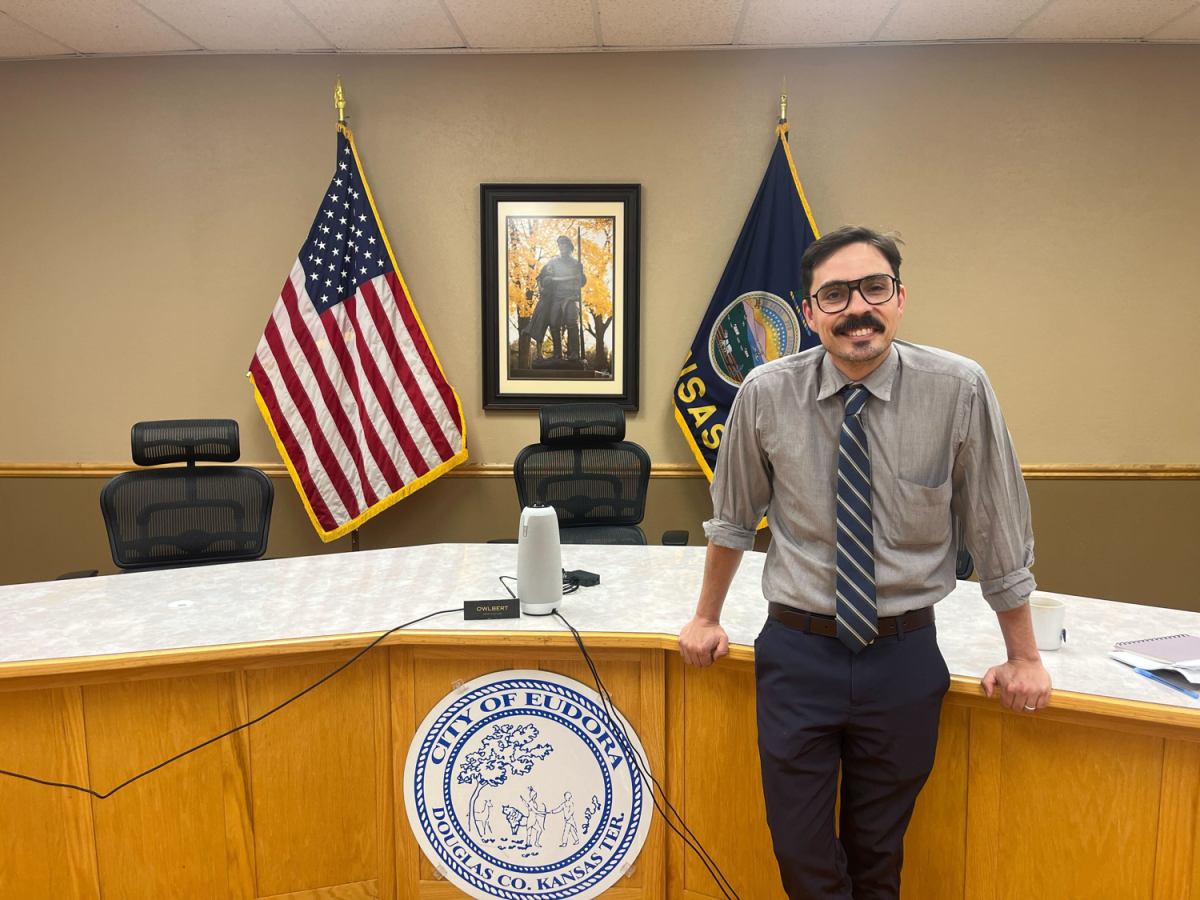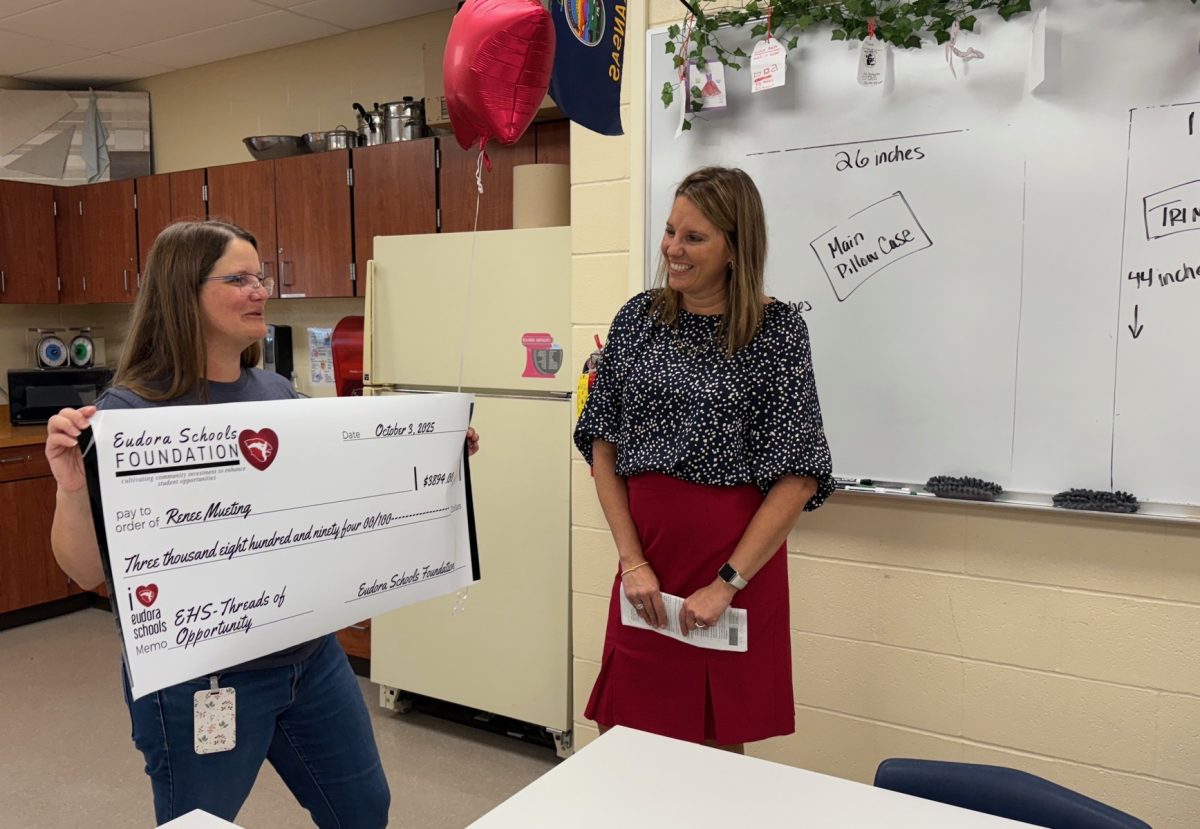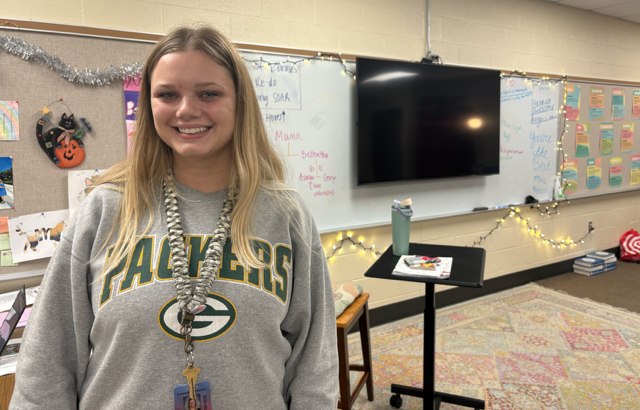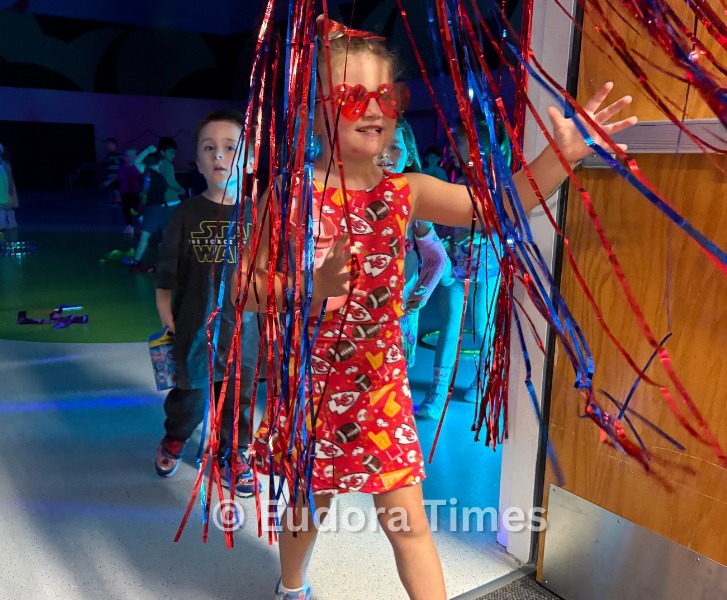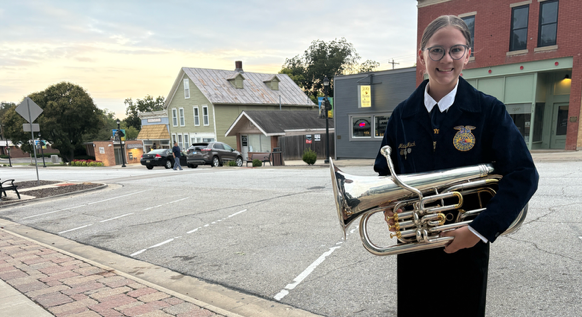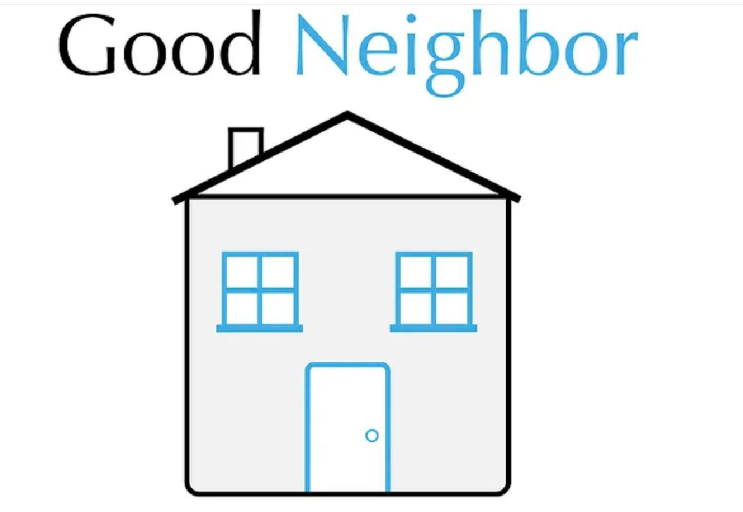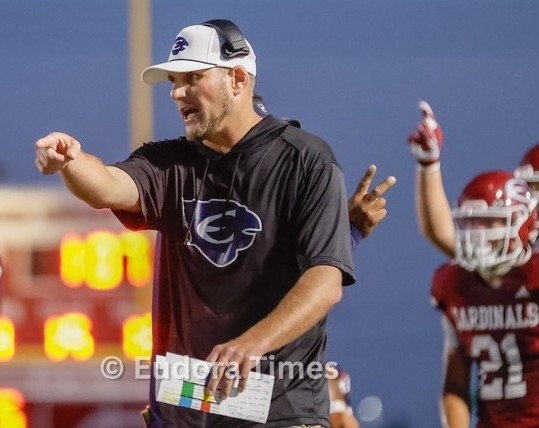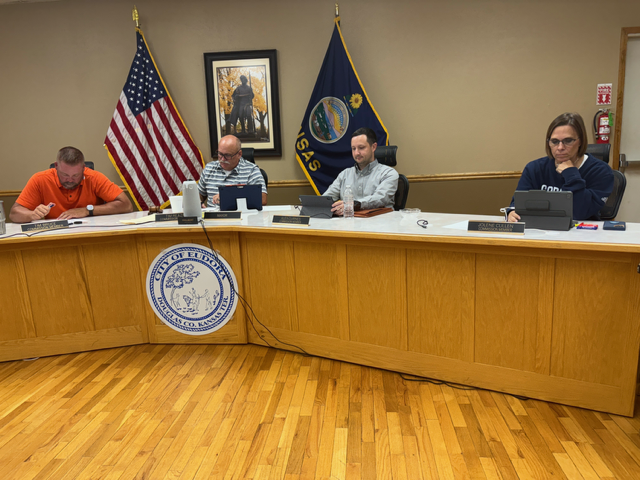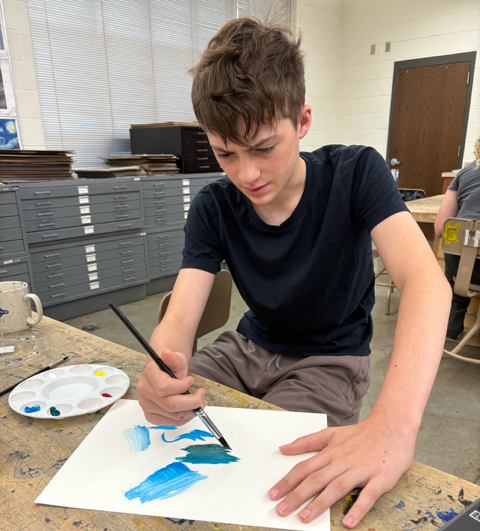As conversations begin in the district about generative artificial intelligence, administrators, teachers and students have varying thoughts on its inclusion in the classroom.
The School Board began discussing AI at its August meeting. There, Superintendent Stu Moeckel said he wants to eventually implement safe district-approved AI tools for teachers and students.
“We can either learn how to use it, or we can fall behind,” Moeckel said during the meeting. “I don’t think we’re going to be able to ignore it.”
The board discussed forming an AI Advisory Committee for the district to give input. The Eudora Times spent the past month gathering feedback from students, principals and teachers on the topic.
Some students don’t think AI has any place in the school district at all. Sophomore Amillia Dressler said she would support a districtwide policy.
“From what I’ve heard, I have heard some people have used AI on some things, and I just think that’s not really how you learn,” Dressler said. “That’s more just trying to get something done.”
Sophomore Eliza Whitis also doesn’t think it should be used in schools.
“Outside the class, fine, as long as you’re not using it to cheat on an assignment,” Whitis said.
She said she doesn’t think people should be able to pass everything with AI and then become professionals like doctors or lawyers.
Freshman Samantha Valdiviezo agreed AI should not be used in schools.
“It just ruins people’s brains to overuse it, and it just doesn’t help us,” Valdiviezo said.
She also said she’s concerned about ethical problems around AI use, like the amount of water it uses to run.
AI programs use data centers, and the energy is converted into heat. Data centers are cooled down with water so they don’t overheat. While it is difficult to measure exact water usage, one article estimates that the water usage of global AI is projected to equal the equivalent usage of six Denmarks in 2027.
Freshman Kollyn Dice also referenced the environment. He said he believes AI shouldn’t be used because of its impact and because “we have already done so much without it.”
Senior Henry Elmer said he uses AI to generate sources and ideas for schoolwork. He said he thinks use should “stop from there.”
About 26% of U.S. teenagers say they have used ChatGPT for schoolwork, according to a 2025 survey from the Pew Research Center.
Elementary Principal Seth Heide said a district policy would not affect the elementary school. However, both the high school and middle school principals support creating a policy for their schools and agree AI is not going away.
“It’s another tool like anything else,” EHS Principal Bill DeWitt said. “You either control it, or it controls you.”
However, he said it cannot substitute “who we are as humans.” He said while it can save a lot of time, it lacks the empathy a student would receive from talking to a peer or teacher.
Middle School Principal Jeremy Thomas said he supports a policy, but he thinks it needs to be a working policy that can adapt to the quick changes of AI.
“A policy is good, but I think it should be a policy that can be worked through to make adjustments to help,” Thomas said.
He said while AI can be a useful tool, students still need to create their own work and avoid plagiarism.
“We’re also trying to teach the kids right now, ‘It still needs to be in your words,’” Thomas said.
Eighth grade English language arts teachers are having their students write essays on paper and then putting them into the computer to avoid plagiarism issues with AI, Thomas said.
Seventh grade teacher Maggie Kerr said she’s caught students using AI for papers a few times, but it’s pretty obvious when that happens. She also said English language arts teachers can put papers into AI checkers, which has been helpful.
Kerr said she supports a districtwide policy because it would become the norm for students and it would be helpful for teachers to have something to refer to.
“I’ve just learned that students do very well when there is a common rule across the board so they can’t try to twist it or try to, kind of, sneak through the guidelines there,” Kerr said.
A quarter of public K-12 teachers across the country said AI tools do more harm than good in education, according to a 2023 survey from the Pew Research Center. That same survey found high school teachers are more likely to negatively view AI use in schools than teachers in other grade levels.
Last school year, 32% of teachers reported using AI tools weekly, according to a Gallup survey. Teachers most often used AI tools for preparing to teach, making worksheets and modifying materials to fit students’ needs. Kerr said she has used AI to modify the same assignment for different levels of students.
Seventh grade science teacher Kyle Stadalman uses AI in his classroom. In one of his class projects, Stadalman has students use the AI tool SchoolAI to learn about animal adaptations.
He said teachers need to teach students how to use AI properly because it’s not going away.
“They have to really be thinking about the correct prompts to use to get the responses,” Stadalman said. “Students, they tend not to know what questions to ask. And so then they don’t know how to search for things, and so it’s a really good way of teaching them.”
Stadalman said he supports a districtwide policy and thinks the district should consult teachers first.
“Definitely, in my opinion, start with teachers because they are the ones on the front lines,” Stadalman said. “Teachers definitely, principals, parents, even bringing in people that are outside of education, because how are they using it professionally?”
Stadalman said AI can be helpful specifically for science classes because it can make the research process more efficient. He also said students can learn how to critically evaluate information by analyzing the responses they get from AI models.
“We could teach that districtwide, of being critical of the results that come in,” Stadalman said.
Art teacher Austin Lauxman’s class recently created banned book covers for the library, and Lauxman said he encouraged one student to use AI to get inspiration for her drawing of “To Kill a Mockingbird.” He said he thinks using AI helped her a lot.
“I was like, ‘Okay, you found the interior of this building that you want to use that looks like, you know, the courthouse in “To Kill a Mockingbird,’” Lauxman said. “I was like, ‘Let’s throw it in here and see what happens.’”
Lauxman said a districtwide plan could be good because he likes the idea of every kid getting the same message. He said this discussion of the positives and negatives feels like the same conversation educators had about the internet 20 years ago.
State departments for education in 27 states have issued guidance for AI use in K-12 schools, according to Ballotpedia. Kansas is not one of them.
However, in August, researchers at the University of Kansas published guidelines to help educators implement AI in their classrooms, which include taking a human-centered approach and building AI readiness.
Earlier this year, President Donald Trump issued an executive order pushing for the implementation of AI use in schools.
What do you think the school district should include in an AI policy? We want to hear from parents and local business leaders next on this topic. Email us at [email protected].
Reach reporter Bella Waters at [email protected].
